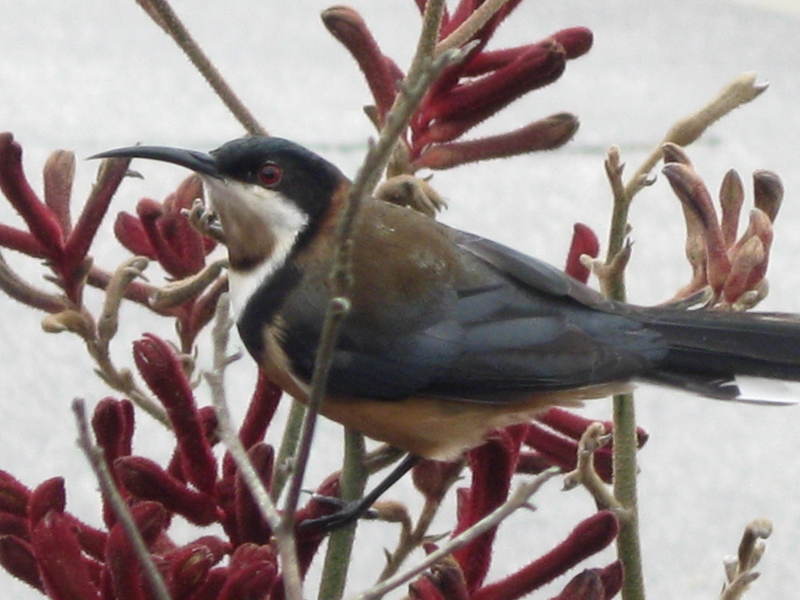| The Western Spinebill, Acanthorhynchus superciliosus, is a honeyeater found in the heath and woodland of south-western Western Australia. It ranges between 12–15 centimetres (4.7–5.9 in) long, and weighs around 10 grams (0.35 oz). It has a black head, gray back and wings, with a red band behind its neck and from its throat to its breast. There are white banks behind its bill and its eyes. It has a long slender curved bill. |

